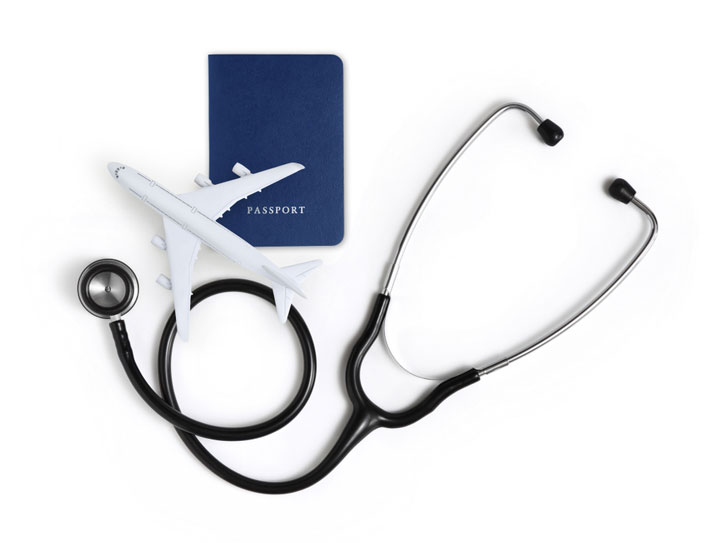Rising medical costs and healthcare reform have increased the need for careful review and management of medical resources. The unique and vital role of the utilization review (UR) nurse serves this need.
Like many nurses, you may be unfamiliar with the nurse’s role in UR. Although the UR concept isn’t new, the nature of the role and demands on utilization reviewers have changed dramatically over the years. For some bedside nurses, their first exposure to UR comes when a UR nurse takes them aside to ask about the status or condition of a patient in their care. They may feel threatened in this situation, concerned that the care they’ve been delivering is being questioned in some way. But in most cases, this is far from the reason for the inquiry. UR nurses are investigative by nature, always searching for essential information to help make certain that the patient’s insurer will authorize services. This article describes this rewarding area of nursing practice and clears up common misperceptions about the role.
Goals and nurses’ roles
The goal of UR is to control costs while monitoring the quality of patient care. UR nurses critically examine patient medical records, paying close attention to the appropriateness of healthcare expenditures. They rely on their experience, education, and awareness of appropriate review criteria to compile an accurate account of the patient’s clinical picture. They’re responsible for relaying this information to external reviewers representing third-party payers. Typically, the information includes the patient’s presenting complaint, working diagnosis, supporting diagnostic findings, plan of care, and course or progression.
While UR nurses in the insurance and managed-care arenas are on the receiving end of the clinical information, they play an important role in the authorization process. A solid knowledge base, critical thinking skills, and ability to apply evidence-based guidelines are crucial. UR nurses employed by third-party payers typically are expected to follow guidelines when reviewing documentation, such as the Milliman Care Guidelines® or McKesson’s InterQual Criteria®. But each patient case is unique and may not fit neatly into these guidelines. UR nurses must be able to critically and efficiently decipher each piece of clinical information. (See Types of utilization review.)
Documentation is key
Accurate and appropriate clinical documentation is crucial in UR. Lack of documentation can create many roadblocks for the UR nurse. What’s more, the quality of documentation in a patient’s record can affect the quality and effectiveness of patient care—and the financial integrity of the healthcare facility. Incomplete documentation and coding can cause hospitals to lose millions of dollars in revenue. By improving documentation, they can expect reductions in coding errors and denied claims, which optimizes reimbursement.
Important documentation includes the patient’s condition, extent of change from baseline, treatments required, positive and negative responses to treatment, diagnostic abnormalities, and the patient’s progression (or lack thereof) relative to what would be expected. Good documentation provides a clear picture of the patient’s acute-care needs as well as abnormal findings. When reviewing documentation of clinical information, UR nurses look for abnormal clinical findings on physical examination, vital-sign measurements, laboratory tests, and imaging studies.
Who employs UR nurses?
UR nurses are employed in inpatient and outpatient clinical settings, the insurance industry, and managed care companies. They serve as liaisons among the patient, provider, and third-party payer to help prevent overuse or misuse of medical resources in an effort to maximize provider reimbursement and minimize consumer payments.
Job requirements
You may learn about UR career opportunities through your facility’s case management or quality improvement departments or from a job board. The UR nurse must be a licensed registered nurse, preferably with a bachelor-of-science degree in nursing and at least 2 years of acute-care nursing experience. Also, she or he should have at least several years’ experience in a particular specialty area and be familiar with current evidence- based practices, as well as the rules, regulations, and expectations for each insurance company’s review criteria. Broad-based nursing knowledge and experience, critical thinking skills, and familiarity with evidence- based practice criteria and guidelines are essential requirements for a UR career. UR nurses may want to consider obtaining certification in healthcare quality management through the American Board of Quality Assurance and Utilization Review Physicians.
Interprofessional collaboration
Collaboration among interprofessional team members involved in each patient’s care is crucial. Team members’ input enables UR nurses to form a more comprehensive clinical picture, which they relay to the insurance reviewer. Besides collaborating with team members directly involved in patient care, UR nurses also spend considerable time collaborating with physicians’ office staff, schedulers, registrars, and insurance verifiers both within and outside the organization.
By helping to prevent overuse or misuse of medical resources, UR nurses promote high-quality care and cost containment. An interprofessional approach and clear, concise communication are essential for ensuring authorization of services that are planned or being rendered, as well as for maximizing reimbursement and minimizing costs. By applying evidence- based criteria and critically evaluating patient-care practices, UR nurses can influence resource-use management.
Jennifer LaBenne is a precertification coordinator registered nurse at Valley Care Health Systems, Northside Medical Center, in Youngstown, Ohio.
Selected References
Daniels S, Frater J. Hospital case management and progression of care. Healthc Financ Manage. 2011;65(8):108-13.
Davila L. How to become a utilization review nurse. InnerBody.com. December 9, 2015.
Koshy S. Documentation tips for pulmonary medicine: implications for the inpatient setting. Chest. 2012;142(4):1035-8.
Overview of HCQM Certification. American Board of Quality Assurance and Utilization Review Physicians.



















8 Comments.
I am replying to Cynthia Martinez and Rosalyn. I have been a Utilization Review Nurse for 17 of my 26-year nursing career. I worked in an Acute Care Hospital at the time and saw there were openings for Case Managers. That was the job title when I started but it was a combination of case management and utilization review. I was required to have 5 years clinical experience in Acute Care and interview with the Director of Case Management. If you go in with an understanding of how the utilization process works you have a much better chance to get the position.
Getting started with either position–check hospitals where you live and see if there are openings. Employers for insurance, home health or other positions out of the hospital want candidates who have Inpatient Acute Care experience.
Certification–URAC offers certification for Utilization Review Nurses, CMSA is good for CCM which is case management, the positions can overlap so the CCM helps for UR.
Hope this helps
I am looking to get certified as a utilization review nurse but can’t seem to find any options. Can anyone give me information on that.
I am a registered nurse of 26 years and I have been interested in case management and utilization review work as well. Does anyone know a good way to get started.
Years ago the nurse had to be licensed in the state she was performing clinical reviews in. Payers either had to automatically approve out of state admissions or hire nurses license din multiple states. Do you know if that rule has changed? For instance if a nurse licensed in Massachusetts (a non-compac state) is hired by a healthcare payer and has to review an admission for a Medicare Advantage member who was urgently admitted in Florida, can the Mass nurse do the clinical review of the admission in Florida?
thank you
This might not be a question in reply to the automation of utilization review via artificial intelligence but I would like to know the difference between doing a Prior Auth Review and Inpatient UM Nurse and what is the big difference when it comes to responsibilities. Does PA reviewer follow the member from admission to discharge?
Automation of utilization review via artificial intelligence is being rolled out now.
I am interested in discovering where I might applying to take an online course which would allow me to seek employment in utilization review I have been a bedside Rn for over 10 years but am unable to continue direct care for health reasons. Thank you for your time
I am looking into this myself. I see your post is from 3 years ago. Did you ever become a utilization nurse? If so, how?